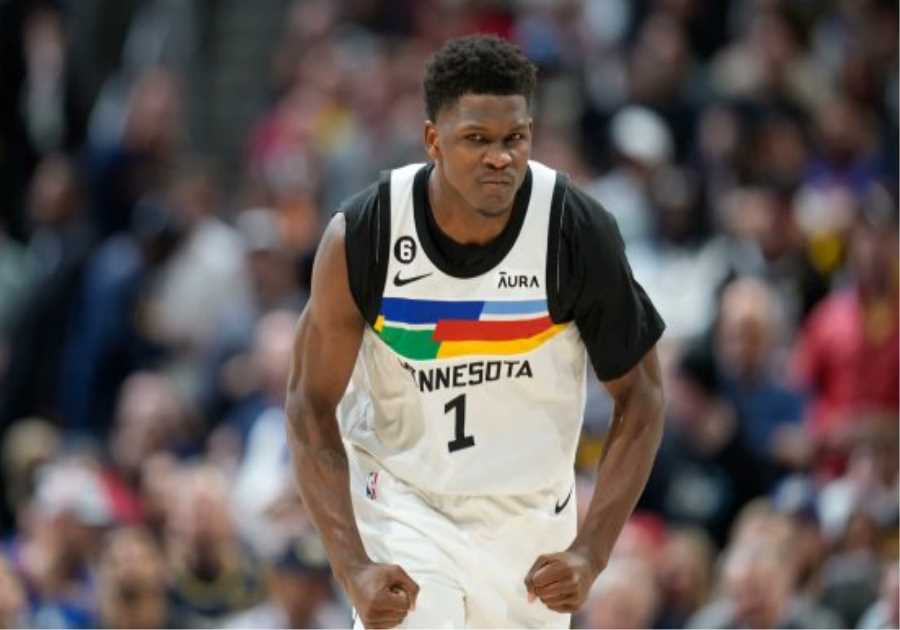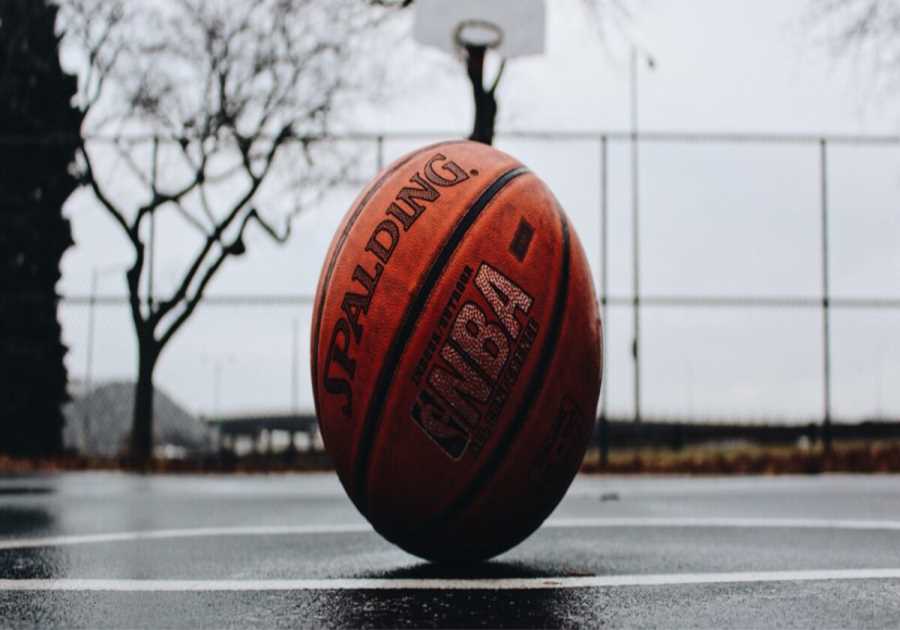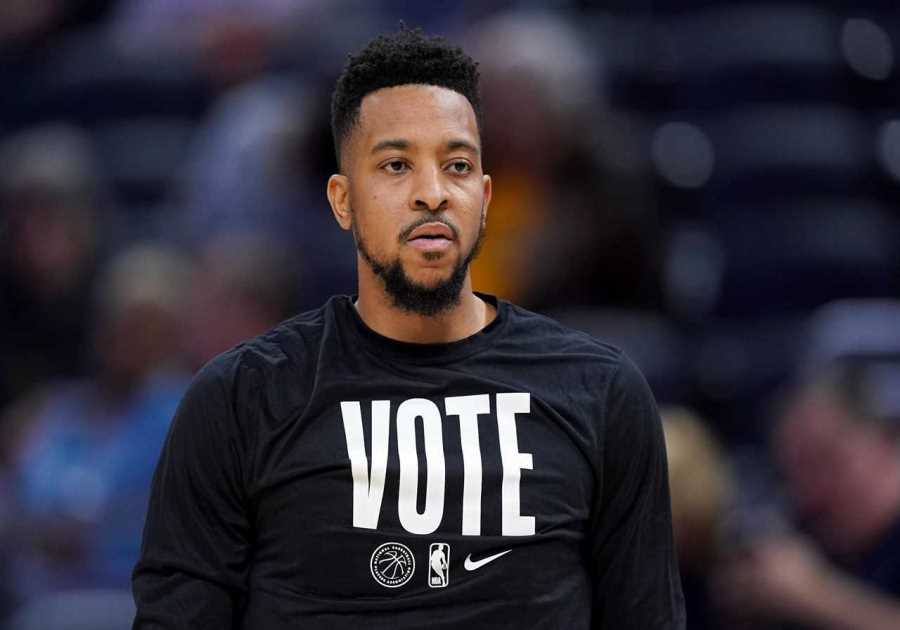
Getty Image/Ralph Ordaz
In a dead period of the NBA calendar between All-Star weekend and the resumption of on-court action, many look to dive into the NBA Draft world, perhaps for the first time during a given cycle. That period has arrived for 2023, with the Draft looming in just four months and a handful of teams firmly playing out the string with an eye toward lottery positioning.
This is a class with a clear No. 1 prospect in the form of Victor Wembanyama, who many believe is a generational talent on a potential trajectory toward superstardom. From there, Scoot Henderson grabs plenty of headlines as a potential star initiator at the point of attack but, at the same time, neither Wembanyama nor Henderson is operating in the traditional collegiate structure. This also applies to top-tier prospects like Amen Thompson and Ausar Thompson, who suit up for Overtime Elite.
As such, many will be catching up on the prospects with a crash course over the next four months and, without further delay, it is time for the first DIME mock draft of the 2023 cycle.
Note: Draft order determined by current standings as of the All-Star break.
1. Houston Rockets – Victor Wembanyama (C/F, Metropolitans 92)
With all due respect to Scoot Henderson, who would be the No. 1 player in many classes, it appears that the team that wins the lottery will be drafting Victor Wembanyama. He is an absurd prospect who stands 7’4 with guard skills and elite rim protection, and many intelligent evaluators believe he may be the best pure prospect since LeBron James. Is that reasonable? We’ll see, but it would shock everyone if he doesn’t go No. 1 at this point, even with a few months to go.
2. San Antonio Spurs – Scoot Henderson (G, G League Ignite)
The Spurs would win big in this scenario, even without Victor. Henderson is a monster of a prospect with high-end burst, real polish, and tremendous production for a player who just turned 19 years old playing against pros in the G League for the second straight season. As noted above, Henderson would be a rightful No. 1 in many classes.
3. Detroit Pistons – Amen Thompson (G, Overtime Elite)
Thompson is a transcendent athlete, and I don’t say that lightly. He is 6’7 with unreal explosiveness, and he projects to be a tremendous defender and transition weapon at the NBA level. Amen is also a very, very good passer, and the big question is whether he can round out his game with perimeter shooting and something between the rim and the three-point line. Still, he has All-NBA upside if the pieces fit, and team fit is merely a tiebreaker at this early juncture before the draft order is actually set.
4. Charlotte Hornets – Brandon Miller (F, Alabama)
At this juncture, we have no idea how the pending legal questions may impact Brandon Miller. This is the placement he would have from a basketball standpoint, but there is tremendous uncertainty regarding what the future holds for him.
5. Orlando Magic – Cam Whitmore (F, Villanova)
Villanova is stunningly bad this season, at least by Villanova standards, but that isn’t really on Whitmore. His scoring value is clear, and he checks a lot of boxes with size and physicality. It’s unclear whether he can make others better as a passer, but there is a lot to like.
6. Indiana Pacers – Jarace Walker (F, Houston)
Walker is a favorite of mine, largely because of his defense and how hard he plays. The offensive development has pushed him up boards, though, and it seems entirely possible he could be a top-five pick. It’s been a heck of a rise.
7. Orlando Magic (via Chicago) – Ausar Thompson (G/F, Overtime Elite)
The consensus is that Ausar is a step or two behind his brother from an upside standpoint. He isn’t quite as electric athletically, although still very good. Ausar is also more of a wing than a guard, like Amen is. The two do have similar questions with regards to their ability to shoot, and it’ll be interesting to see how they stack up.
8. New Orleans Pelicans (via Los Angeles Lakers) – Gradey Dick (G/F, Kansas)
Dick is going to be a defensive target for the opposition, at least for a while. However, his shooting is genuinely dynamic, and he has a great feel for how to move without the ball on offense. This is pretty high for him, but his name is shooting up boards in recent weeks.
9. Toronto Raptors – Nick Smith (G, Arkansas)
This is a big TBD. Smith has barely played at Arkansas due to injury and hasn’t lit the world on fire. Going back to high school, where he was he No. 1 player in the country as a recruit, it is easy to see his sky-high ceiling as a shot creator with size and craft.
10. Portland Trail Blazers – Cason Wallace (G, Kentucky)
Wallace may be the best defensive guard in the class, and the Blazers desperately need perimeter defense. Granted it wouldn’t be the best process to take a third guard in the lottery, but Wallace was a five-star high school guy for a reason. It’s not only the defense.
11. Washington Wizards – Jett Howard (G/F, Michigan)
Simply put, Howard is 6’8 and can really score. Everything else lags behind, but he knows how to play and teams are clearly buying the scoring upside.
12. Utah Jazz – Keyonte George (G, Baylor)
From a college standpoint, George isn’t even the best guard on his own team. But from an NBA standpoint, he projects quite well as a starting guard down the line given his craft and scoring acumen.
13. Oklahoma City Thunder – Brice Sensabaugh (G/F, Ohio State)
Sensabaugh is a divisive prospect because, right now, he is mostly a shooter/scorer that doesn’t do much else. Oklahoma City could use another high-end shooter, and Sensabaugh is definitely that, but you could nitpick his overall profile pretty easily.
14. Golden State Warriors – Taylor Hendricks (F, UCF)
A few months ago, Hendricks wasn’t even a consensus first-rounder, much less a potentially lottery pick. He came from well off the radar as a freshman at UCF, but the blend of size, athleticism, and production helps.
15. Atlanta Hawks – Anthony Black (G/F, Arkansas)
There is a ton to like with Anthony Black. He is a very strong defender already. He is a good ball-handler and playmaker. He plays very hard and impacts winning. The major question is his jumper, but that is far less of a concern in the middle of the first round than it would be in the top half of the lottery.
16. Utah Jazz (via Minnesota) – Dariq Whitehead (G/F, Duke)
It’s been a very rough season for Whitehead at Duke, going from a consensus top-10 guy to a step below that. It’s possible that teams will focus more on his high school projection than his up-and-down showing at Duke, and that would help him.
17. Los Angeles Lakers (via New Orleans) – Maxwell Lewis (G/F, Pepperdine)
People are all over the place on Lewis. Folks who value statistical production have him as a lottery pick. Folks around the league seem to be much lower. He’s also playing at Pepperdine, which almost automatically creates the divide for some players operating outside of the traditional power-conference structure. He’s definitely a first-round pick, but we’ll see.
18. New York Knicks (via Dallas) – Kris Murray (F, Iowa)
The twin brother of 2022 top-5 pick Keegan Murray, Kris should be able to join an NBA rotation very quickly, even if he’s not considered as high-profile of a prospect. He isn’t an upside swing, but his two-way appeal at a forward spot is clean.
19. Brooklyn Nets (via Phoenix) – Jordan Hawkins (G, UConn)
Hawkins is seemingly rising on boards, largely due to his movement shooting. He’s not a full-blown specialist, but Hawkins does have fantastic gravity and he should be able to hold up on defense.
20. Houston Rockets (via LA Clippers) – Jalen Hood-Schifino (G, Indiana)
If this was my big board, Hood-Schifino would be higher, because he is fantastic. There are some questions about upside, but Hood-Schifino does many things well and I buy the defense and creation.
21. Miami Heat – Terquavion Smith (G, NC State)
This isn’t the best fit for Smith given his defensive concerns and overlap with Tyler Herro but, again, it’s so early to be diving deep into fit. Smith is an explosive scorer that has wide appeal in the back half of the first round.
22. Portland Trail Blazers (via New York) – Dereck Lively (C, Duke)
Lively was a top high school prospect in the class and, through that lens, has disappointed in college. With that said, his defense is starting to really pop — he had eight blocks in the Blue Devils’ win over North Carolina — and there is little doubt that he could be a big-time rim protector at the NBA level. Everything else is up in the air.
23. Sacramento Kings – Noah Clowney (F/C, Alabama)
This is an upside swing. It would take Clowney a little while to get to where teams need him to be, so don’t get married to the Kings fit. It’s mostly a placeholder for “any team in the 20’s.”
24. Brooklyn Nets – Rayan Rupert (G/F, New Zealand Breakers)
It’s a little aggressive for me right now, but some view Rupert as a lottery pick. His potential skill set is tantalizing, particularly on defense, and Brooklyn’s depth would give him to time to develop.
25. Memphis Grizzlies – Colby Jones (G/F, Xavier)
Jones projects as a valuable glue guy, no matter where he goes. He’s a 6’6 guard who can handle, pass, defend, and shoot. That is an enticing package, even if he is more of a role player.
26. Indiana Pacers (via Cleveland) – Kyle Filipowski (C/F, Duke)
Filipowski’s offensive arsenal is very impressive and he might be Duke’s best player this year. With that said, it is unclear how he’ll defend at the NBA level, so that’s going to be the swing on his perceived value.
27. Utah Jazz (via Philadelphia) – G.G. Jackson (F, South Carolina)
This is an exceptionally difficult evaluation. Jackson reclassified — he was the No. 1 overall prospect in the class of 2023 — and chose South Carolina as an 18-year-old freshman. The Gamecocks are kind of a mess, making him look worse, and his stats are rather concerning. Then, if you watch him, the flashes are considerable the pedigree is there. It’s hard to see him sliding out of the first round, especially if a team with a more long-term view like Utah believes it can help him reach his potential.
28. Charlotte Hornets (via Denver) – Kobe Bufkin (G, Michigan)
There is a chance Bufkin is at the peak of his perceived value right now after a nice mid-season run in Ann Arbor. However, he could continue to rise given his burst, especially if evaluators buy into his shooting.
29. L.A. Clippers (via Milwaukee) – Julian Phillips (F, Tennessee)
Phillips isn’t a consensus first-rounder by any means, but it’s easy to see why he’d be in this range. He’s a 6’8 forward who can defend with versatility and, in theory, shoot it a little bit.
30. Indiana Pacers (via Boston) – Trayce Jackson-Davis (F/C, Indiana)
Jackson-Davis has earned top-40 status with a fantastic season. He has always been highly productive but, in the last couple of months, Jackson-Davis has taken a leap with his supporting characteristics and generally dominated quality competition in the Big Ten.
Brad Rowland
https://uproxx.com/dimemag/nba-mock-draft-2023-all-star-break/
By: Brad Rowland
Title: NBA Mock Draft 2023: Examining Where Things Stand At The All-Star Break
Sourced From: uproxx.com/dimemag/nba-mock-draft-2023-all-star-break/
Published Date: 02-22-2023
Frequently Asked Questions
Which NBA player is the best defender?
If you are familiar with basketball, it is not surprising to see "The Dream", at number one on this list. Hakeem Olajuwon blocked 3,830 shot during his 18-year NBA playing career. This number is higher than any other player in NBA history. He was also a 9-time All-Defensive player and 2-time DPOY, leading his team to win two NBA Championships. He was an outstanding defender. His timing, footwork and athleticism enabled him to be a superb shot blocker and rebounder. His ability to guard any position on the court made him a nightmare for opponents. Not only that, but he was also one of the greatest offensive players as well. He had incredible agility, quickness, and a deadly array of spin moves, which allowed him to score in the post. His all-around versatility made him one of the best players, let alone defenders. This list should include Hakeem Olajuwon.
Bill Russell ranks only #2 on this list, with an average of 15.1 points per game. But he was a formidable defender in his era and gave opponents nightmares. Bill Russell, who has 11 NBA Championships and the highest defensive win share in NBA history (133.64), is a true legend. He was integral to the Boston Celtics' amazing success. His defense prowess and rebounding skills were critical to their championship victories. He is often considered the greatest defender in NBA history because of his ability to predict plays and understand the strategies of opponents.
Dennis Rodman is third on this list. He was one of the unique players in the history of the NBA and always made an impact when he played. Rodman's tough defense, rebounding skills, and ability to score without the ball allowed him to be a consistent winner for his team. In fact, Dennis Rodman was a 7-time Rebounding Champ, 8-time All-Defensive Player, 2-time DPOY, and a 5-time NBA Champion. His defensive end tenacity was exceptional, and he always seemed in the right place at just the right time. He was also an exceptional rebounder. He out-jumping taller players and taking boards from them.
Which NBA Player is considered the NBA's all-time scoring leader?
Lebron James is the NBA's all-time scoring leader. His career has seen him score 38,388 points as of February 7th, 2023. LeBron James second with 38,38th points on February 7th to break Karim's record. Karl Malone is in the third spot with 36.928. Kobe Bryant is fourth with 33,643 point. Michael Jordan is in fifth position with 32,292 marks.
What is the NBA salary limit?
The NBA salary limit is a cap that restricts the total salary for each team. Each year, the league sets this limit. This limit is set by the league each year to ensure equal playing field between teams. It prevents teams from signing multiple high-priced athletes and creates an unfair advantage. Teams must stay under the cap to sign free agents or make trades. They may exceed it if they make certain exceptions like signing Bird rights players or offering players a contract that includes a portion of their salary being counted against the cap, and the rest paid out as bonuses. The salary cap is an integral part of the league and helps to ensure a competitive balance between teams.
Which rivalry is the most fierce in the NBA?
The NBA's biggest rivalry is held by the Los Angeles Lakers and the Boston Celtics.
With 12 meetings, the Boston Celtics and Los Angeles Lakers have been together the most of any NBA Finals teams. The Celtics won nine of those meetings. Their first meeting took place in 1959. They both excelled over the next years, especially during 1960s-80s, when they would encounter each other six times and then three times. Even though 2000 was the new millennium in many ways, they still met twice each year.
Statistics
- "NBA first-round ratings drop 27 percent, 40 percent since 2017–18". (en.wikipedia.org)
- Between 2012 and 2019, the league lost 40 to 45 percent of its viewership. (en.wikipedia.org)
- As of 2014, 45 percent of its viewers were black, while 40 percent were white, making it the only top North American sport that does not have a white majority audience.[102]As of 2017Democrats than Republicans.[103]Outside (en.wikipedia.org)
- Williams would 'likely' accept a deal worth $14-15M/year; Celtics are 'unlikely' to offer such a deal (HoopsHype) (bleacherreport.com)
- The 2013–14 season opened with 92 international players on the opening night rosters, representing 39 countries and over 20 percent of the league. (en.wikipedia.org)
External Links
sbnation.com
sports.yahoo.com
- Yahoo Mail, Weather and Search. Politics, News, Finance, Sports & Videos.
- NBA Finals game 1 sees the lowest viewing in recorded ratings history
nba.com
- This Date in the NBA: June
si.com
- NBA Free Agency Preview. The Biggest Question and Rumors
- Free from Quarantine: The NBA bubble Is A Unique Experience
How To
How can you prepare yourself for an NBA experience?
The best way to prepare for an NBA game experience is to ensure you have the right tickets. Tickets can be purchased through the team's website, or an online third-party seller. Make sure you know all the rules and regulations of the arena so that you aren’t surprised. To beat the rush and warm up, arrive early to the arena. Purchase team merchandise, such as a shirt, or hat, if needed. Bring your camera and binoculars for close-up shots of the action on court. If you want to be a part of the action, there are other entertainment options available at halftimes. Enjoy the game!






